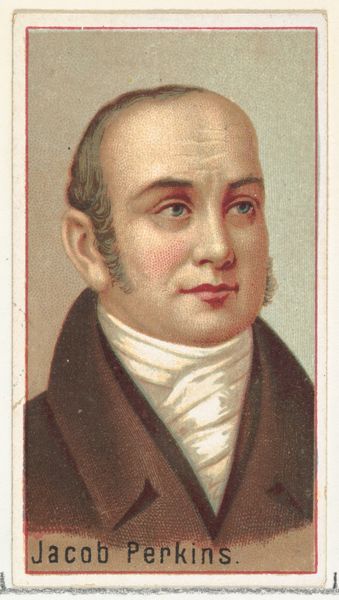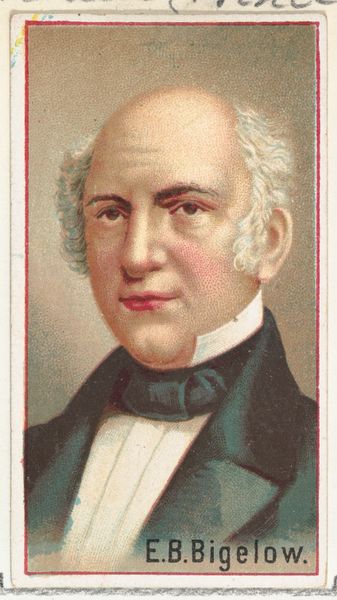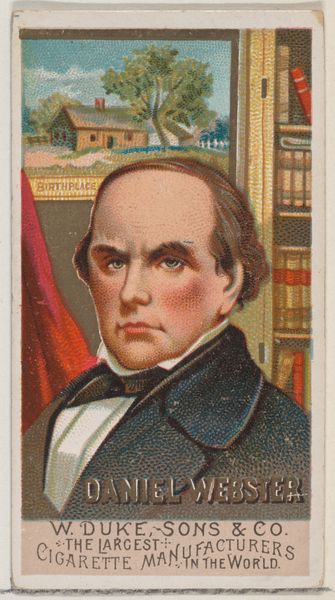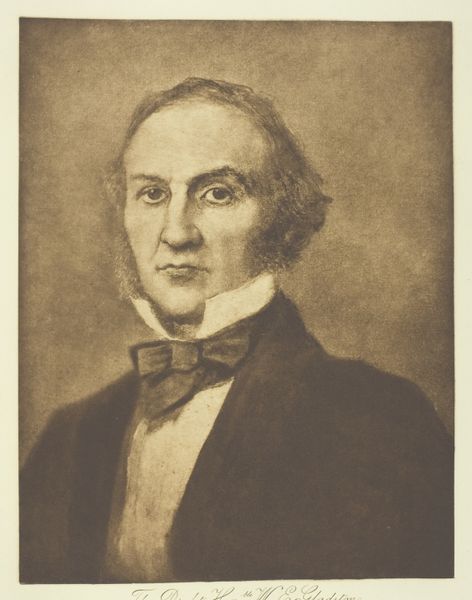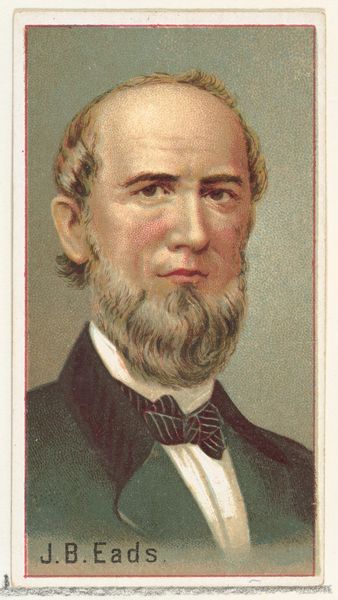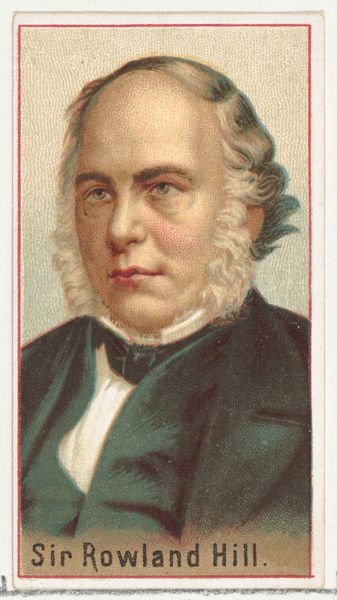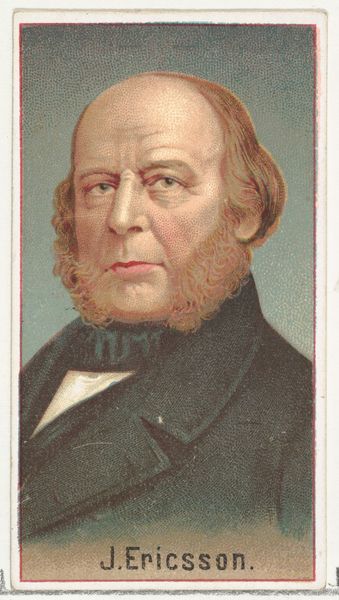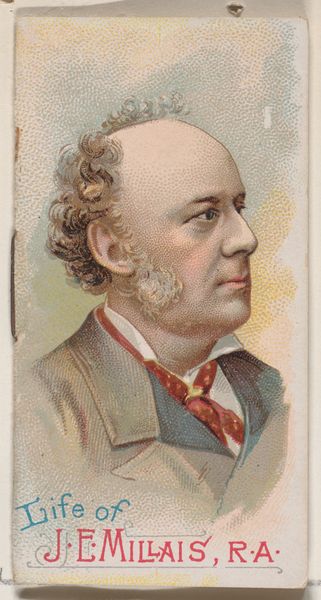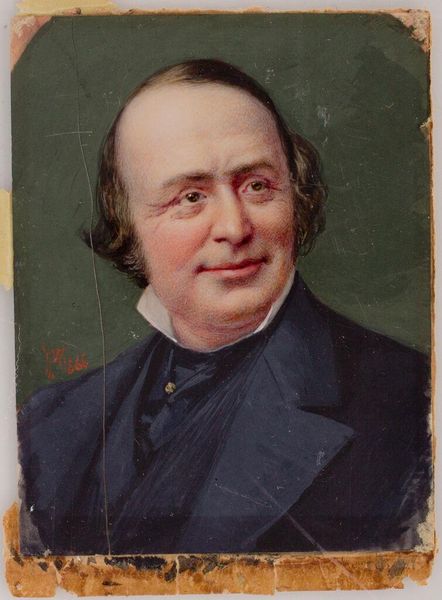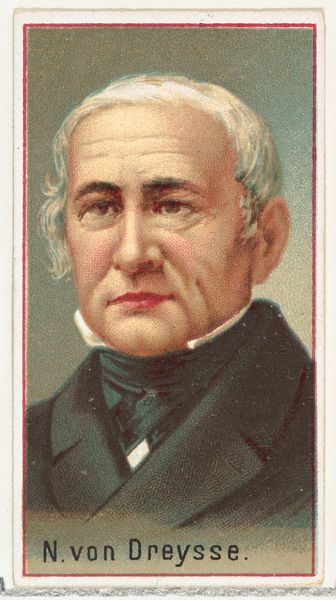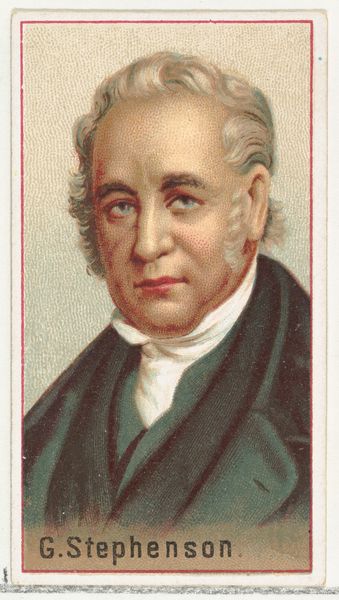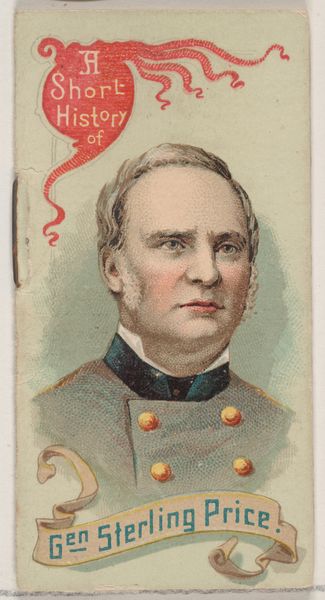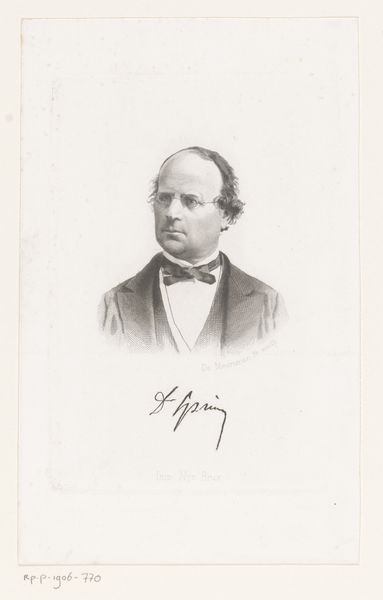
Sir W. G. Armstrong, printer's sample for the World's Inventors souvenir album (A25) for Allen & Ginter Cigarettes 1888
0:00
0:00
drawing, lithograph, print, etching
#
portrait
#
drawing
#
lithograph
# print
#
etching
Dimensions: Sheet: 2 3/4 x 1 1/2 in. (7 x 3.8 cm)
Copyright: Public Domain
Editor: So this is a lithograph from 1888, a printer's sample for Allen & Ginter Cigarettes, featuring Sir W.G. Armstrong. It’s a small portrait, but the detail is incredible. The artist really captured his likeness. How should we read it today? Curator: I think we need to unpack the history of these cigarette cards to understand their cultural impact. They were essentially advertisements, weren't they? Given away to encourage collecting, often depicting "masculine" archetypes like inventors. How do we grapple with that in today's world, acknowledging the public health issues and the legacy of promotional strategies? Editor: So it's about context? Seeing beyond the image? Curator: Precisely. It asks us to interrogate power structures and social norms of the period. Who got celebrated and why? And how does the commercial element, tobacco, affect that selection? Do you find that the subject’s confident gaze plays a part in conveying that power? Editor: Yes, there’s a sense of authority and the subject exudes self-possession. Does the format lessen that sense? Cigarette cards seem so trivial. Curator: That tension between the small format and grand subject is crucial! Does it democratize the image or trivialize the achievement? The card, as a mass produced item, allows accessibility. Yet the message might remain problematic. It makes you question who benefitted from this so-called ‘progress.’ Editor: It’s more complicated than I thought! Curator: Exactly! Analyzing the context can expose how power operates through even the smallest cultural artifacts. This artwork reveals that complexity. Editor: Thanks, this discussion broadened my perspective and challenged my preconceived ideas. Curator: And it made me rethink how ephemera functions. I hope listeners feel challenged to question those historical implications as well.
Comments
No comments
Be the first to comment and join the conversation on the ultimate creative platform.
